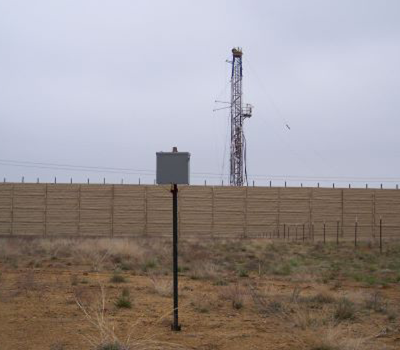Many cities, counties, states, and agencies have developed oil and gas ordinances that require continuous sound & vibration monitoring throughout drilling, production, and transmission operations if the operating site is within a specified distance of various “sensitive receptors” or “protected use” receivers. Such sensitive noise & vibration receptors and receivers often include nearby residences, businesses, public buildings, local parks, national parks, raptor nesting areas, other animal habitats, wetlands, and other protected land. Ordinances & agencies covering these noise receptors often specify allowable operating noise or vibration levels and require operators to continuously monitor their noise and vibration levels to ensure they do not exceed permissible levels. ENC offers short-term, long-term, permanent, and semi-permanent noise and vibration monitoring services to its clients to provide long-term noise & vibration level documentation, compliance verification, and operating condition noise impact analysis.
After reviewing applicable noise & vibration ordinances, ENC personnel will deploy a sound or vibration monitoring system at its client’s site in a pre-determined location to measure and document operational sound & vibration levels. The measured data is collected and prepared in a report which can be sent to clients on a daily or weekly basis. The sound level data is prepared according to the applicable ordinance and can be presented as instantaneous or average sound levels. To provide further noise analysis, ENC also offers long-term frequency logging. Audio recording is also available to help identify the source of sound level “spikes” throughout the logging period. The main component of the monitoring stations is a calibrated sound level meter programmed to log sound levels. ENC’s personnel visit the site daily, download the logged data on a laptop computer, and bring it back to the office for processing.
Recently, ENC has worked with Brűel & Kjær to help develop and test a 3G remote wireless monitoring system that can be downloaded from its office anytime. The wireless monitoring system provides ENC and its clients with real-time sound and vibration level data with a few clicks on a computer. The wireless monitoring systems are powered by solar panels, which allows ENC to deploy them in remote locations. Wireless monitoring systems have been deployed on drill sites in remote areas of Southern California, the Barnett Shale, Texas, and Gulf Shores, Alabama. The self-contained power and communication system has allowed ENC to deploy a wireless monitoring station on an offshore drilling rig in Gulf Shores.
Contact Environmental Noise Control about its sound & vibration monitoring services.






